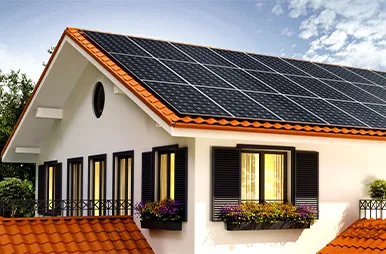bifacial solar panels vs monofacial
Bifacial Solar Panels vs. Monofacial Solar Panels A Comparative Analysis
In the quest to harness solar energy more efficiently, the solar industry has seen remarkable technological advancements over the past few years. Among these innovations, bifacial solar panels have emerged as a compelling alternative to traditional monofacial solar panels. Both types of solar panels serve the same purpose of converting sunlight into electricity, but they do so in fundamentally different ways. In this article, we will explore the characteristics, advantages, and disadvantages of bifacial and monofacial solar panels, helping you make an informed decision for your solar energy investment.
Understanding the Basics
Monofacial Solar Panels typically consist of a layer of solar cells on one side, covered by a protective glass layer. They absorb sunlight from the front side and convert it into electricity. These panels are the most commonly used type in residential and commercial solar installations, owing to their reliability, lower cost, and straightforward manufacturing process.
Bifacial Solar Panels, on the other hand, are designed to capture sunlight from both their front and rear sides. The rear side can collect reflected sunlight, primarily from surfaces like soil, concrete, or water. This unique design allows bifacial panels to generate more energy than their monofacial counterparts under the right conditions.
Efficiency and Energy Output
One of the most significant advantages of bifacial solar panels is their potential for higher energy output. Research suggests that bifacial panels can produce up to 30% more electricity compared to monofacial panels, depending on site conditions and the type of installation. The dual-sided design allows they harness direct sunlight on the front and scattered light or albedo from the ground on the rear side. This characteristic can be particularly beneficial in installations situated in open areas or regions with high albedo surfaces, such as snowy landscapes.
In contrast, monofacial panels have a well-established performance range. Innovations and improvements continue to enhance their efficiency, but they remain limited to energy capture from one side, making their overall energy output inherently lower than bifacial panels.
bifacial solar panels vs monofacial

Cost and Installation Considerations
In terms of upfront costs, monofacial solar panels generally come with a lower price tag. They are simpler to manufacture and install, which translates to lower overall expenses for consumers. Bifacial panels tend to be more expensive, both in terms of the panels themselves and their installation. Their installation typically requires specific mounting systems or elevated structures to maximize their rear-side exposure to reflected sunlight, adding to the overall project cost.
However, it is essential to consider the long-term financial implications. The increased energy output of bifacial panels may lead to faster returns on investment over time, potentially offsetting their higher initial cost.
Durability and Lifespan
Both bifacial and monofacial panels have similar durability and lifespan characteristics, typically lasting 25 years or more. The resilience of materials used in bifacial panels often matches or exceeds that of monofacial panels. However, because bifacial systems can capture extra energy, they may justify their slightly higher price through longer-term energy production without a considerable increase in degradation.
Conclusion
When choosing between bifacial and monofacial solar panels, several factors come into play, including installation site specifics, budget, and long-term energy goals. Bifacial panels offer a promising solution for maximizing efficiency and energy output, particularly in suitable environments with high albedo. In contrast, monofacial panels remain a cost-effective, reliable choice for those seeking straightforward solar solutions.
In summary, both types of solar panels have their pros and cons. Evaluating your specific needs and circumstances will guide you toward the best choice to optimize your solar energy investment. As technology continues to advance, the future of solar energy promises to be bright—regardless of the panel type you choose.
-
Navigating Off Grid Solar Inverter: From Use Cases to Trusted PartnersNewsAug.05,2025
-
Solar Edge String Inverter: A Wholesaler’s Guide to Inverter Technology SelectionNewsAug.05,2025
-
Microinverters: Revolutionizing Solar Energy UseNewsAug.05,2025
-
Future of Monocrystalline Solar Panel Efficiency: Latest Technological AdvancesNewsAug.05,2025
-
Solar Panels for House: A Complete Guide to Residential Solar EnergyNewsAug.05,2025
-
Panel Bifacial Performance in Snow and Low-Light ConditionsNewsAug.05,2025







